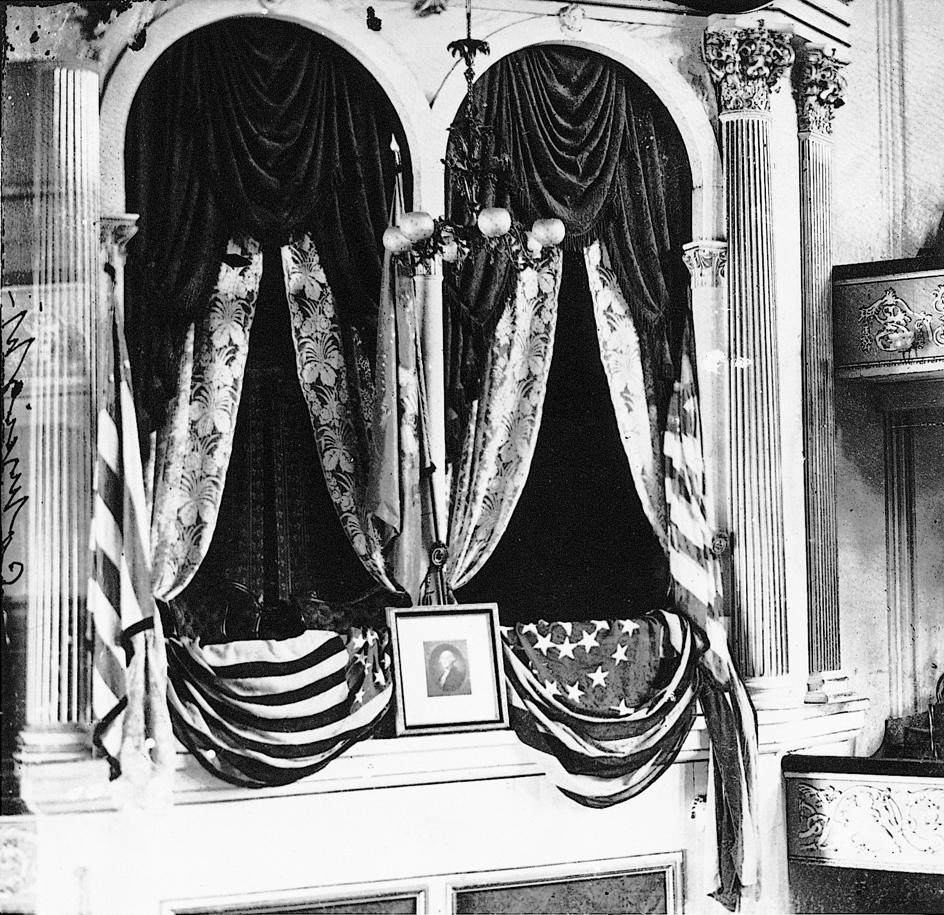Ford’s Theatre National Historic Site, in Washington, D.C., consists of the theater where President Abraham Lincoln was shot and the nearby house where he died. On the evening of April 14, 1865, the president and his wife attended a performance of the comedy Our American Cousin at Ford’s Theatre. The American Civil War was coming to an end. Five days earlier, on April 9, 1865, General Robert E. Lee had surrendered the Confederate Army of Northern Virginia to Union General Ulysses S. Grant. At the theater, John Wilkes Booth, a popular actor who supported the Confederacy, entered the presidential box. He shot Lincoln in the head and escaped by leaping onto the stage, more than 11 feet (3.35 meters) below.
A group of soldiers and physicians carried the unconscious president to a bedroom in the Petersen House, a boarding house across the street. Lincoln died there the next morning.
Ford’s Theatre has been restored to its appearance on the night of the assassination. Flags drape the presidential box, and the box holds some original furnishings and a replica of the rocking chair in which Lincoln sat that night. The Lincoln Museum at the theater displays articles connected with Lincoln and the assassination.

Ford’s Theatre closed immediately after the tragedy. The United States government bought the building in 1866 and used it as an office building and warehouse for many years. The National Park Service took over Ford’s Theatre in 1932. In 1964, Congress authorized restoration of the theater. Stage performances resumed in 1968, after the restoration was completed. Congress established the Ford’s Theatre National Historic Site in 1970. Ford’s Theatre is the only national historic site that is also an active theater.
